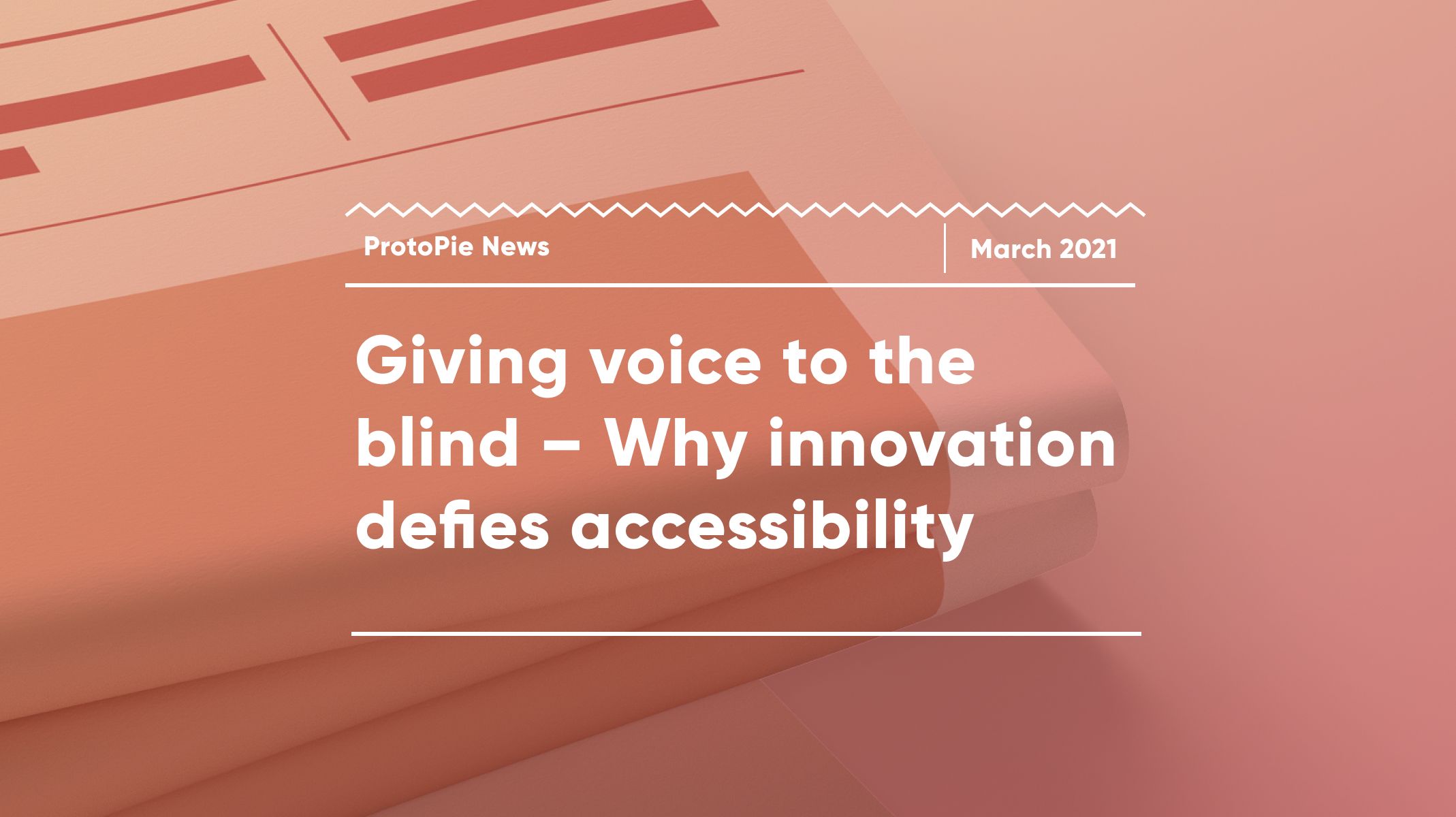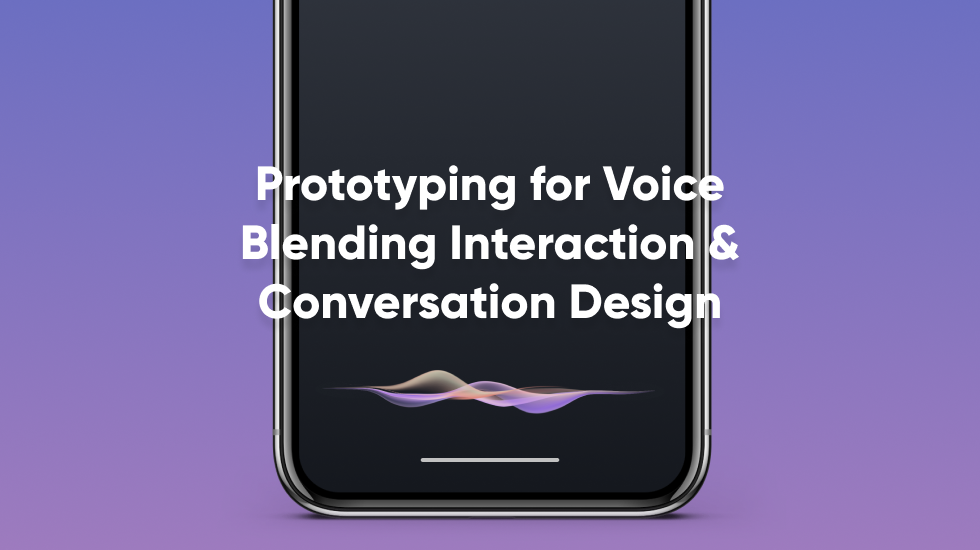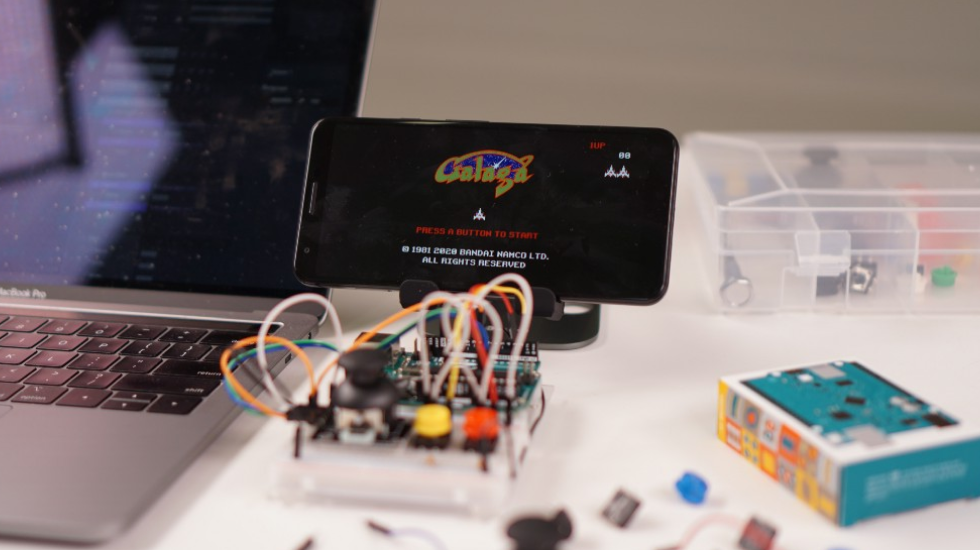Giving Voice to the Blind—Why Innovation Defies Accessibility
How voice technology addresses the loss of tactile experience for the visually impaired as tech progresses and designs become more minimal.


The original post was written for Creativepool and republished with permission.
Have you seen the new iPhone? Beautiful piece of design, almost completely button-less, a joy for the eyes. But what if you can't see all that?
As technology progresses and designs become more minimal, one fundamental aspect of accessibility starts to fade away: the tactile experience. Visually impaired people cannot experience design the same way as we do – and in fact, as mentioned below, they need to feel in order to see.
We've asked Tony Kim, CEO and co-founder of ProtoPie, about his opinion on technology, innovation and accessibility. Here's why voice technology can bridge all these things together.

Giving the blind Voice. Functionality that’s more than a feature, it’s a necessity.
The new iPhone is coming out, and it’s almost completely button-less. Every year, new technologies are released with increasingly sleek designs. As we move forward in innovation, buttons and tactile aspects of technology are being forgone for smooth surfaces.
What’s seen as a huge leap forward in tech is leaping past a group of people who need the coarseness of old technology; the blind. Microwaves without dials, washing machines without knobs, clocks without buttons, and phones without, well, much of any tactile surface, are all examples of this.
The visually impaired operate in a completely different world where they need to feel in order to see, and with technology continually innovating the tactile out of the equation, they are left behind. But the issue here isn’t the technology itself. No, innovation and the strides we have made with technology are remarkable. It’s the fact that we’ve taken a path in which innovation and accessibility aren’t hand-in-hand. But all of this can change, and rather simply.
With voice technology, we’ve seen a bridge in the world of tech, where sleek designs can live alongside accessibility. Now, visually impaired people can talk to their devices instead of searching for haptic-responses or buttons. However, with the functionality of Siri and Google Assistant that we have today, we’re just scratching the surface of what voice tech can truly do.
Voice technology has incredible potential, especially when it comes to accessibility. Instead of asking your phone the weather for the day, maybe it could describe to you exactly what the sky looks like in novel-esque detail. Maybe when your daughter FaceTimes you, you are met with a description of her facial expressions as they change throughout the conversation. Maybe if you accidentally burn your hand on a hot stove, your voice assistant can immediately recognize your sounds of distress and call a neighbor for you. This and more are just the tip of the iceberg when it comes to voice technology, and all of these ideas should be explored more thoroughly.
For progress to be made within voice tech, designers, programmers, and creative thinkers alike all need to have access to programs that allow for play, experimentation, and prototyping. For truly creative solutions to accessibility problems, a diversity of thought, even from outside the realm of voice designers, is necessary.
We need people from all walks of life to be able to build ideas that inspire others. We need collaboration, and we need tools that allow for empathetic design exploration. With the popularity of prototyping software, there are hundreds of thousands of designers excited to manipulate and integrate voice into their prototypes, allowing for an increase in novel, thoughtful, accessible design.
Voice technology is truly future-proof. No matter how devices will change in design and function in the future, our ability to talk with our technology isn’t going away. In this way, the visually impaired will have greater access to new technology as voice tech improves and progresses.
With the expansion and distribution of prototyping software that allows designers to integrate voice functionality, accessibility and innovation will once again be hand-in-hand.
Voice prototyping Masterclass
Do you want to master the art of creating seamless and interactive voice prototypes? Look no further!
The Masterclass in Advanced Voice Prototyping is a comprehensive program that equips you with the knowledge and tools needed to design and build cutting-edge voice-driven user interfaces.
This course is designed for UX/UI designers, product managers, developers, and anyone interested in creating innovative voice user experiences. Prior experience with voice prototyping or Protopie is not required but can be beneficial.


